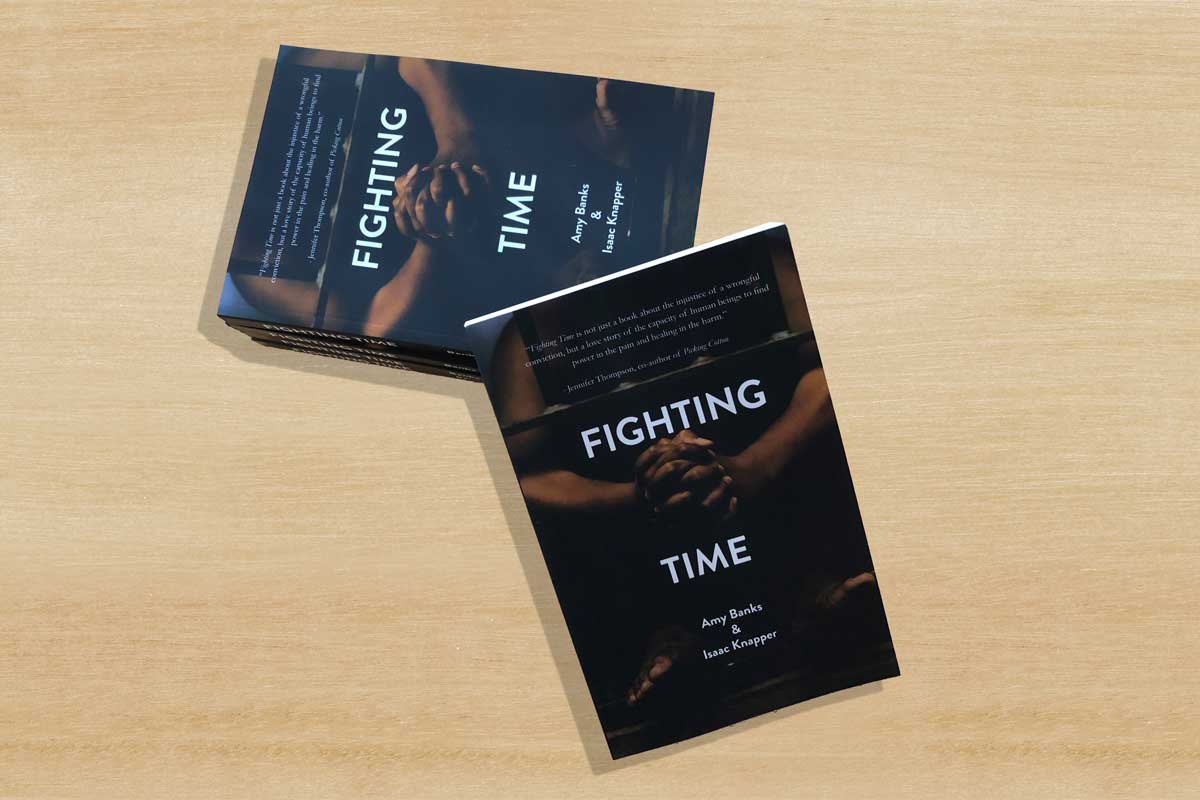
The following is an excerpt of a blog post written by Amy Banks, M.D., that appeared on her Psychology Today blog, Wired for Love.
To say that race relations were not on my radar growing up would be an understatement. In fact, in high school I was just coming out to myself as a lesbian and was preoccupied with the injustices in the LGBTQ community in the late 1970s. However, for my family, that changed in the spring of 1979 when my father traveled on business to New Orleans. On his first day in NOLA, after eating dinner in the French Quarter, he and a colleague walked back to the Hyatt Regency. At the entry to the hotel, they were held up by two young men, and my father was shot and killed.
Within hours, my family was told that “two Black men” had tried to rob my father and his colleague. Having grown up in Maine—which remains the whitest state in the U.S.—this was my first substantive exposure to someone from the Black community. My family was shattered by the murder and naïvely believed that the legal system in New Orleans would help us seek justice.
When the photos of the suspects, Isaac Knapper and Leroy Williams, popped up in our local newspaper, I remember looking at them closely and wondering what in their lives would have caused them to rob and kill. It never occurred to me that the prosecution would withhold exculpatory evidence at the trial and that one of the young men, Isaac, would be wrongly convicted for murder and sent to prison for the rest of his life. My family did not question the arrest and verdict for many reasons, but the biggest was that we were solidly part of the white, dominant culture. One does not have to be an avowed white supremist to be racist—you simply have to be brainwashed 24/7 by a culture that defines health and acceptability as the birthright of all white people and associates people of color with violence.
The traumatic memory of my father’s murder was exponentially more painful as it now involved the wrongful conviction of a 16-year-old boy.
When I found out in 2005 that Isaac had been exonerated in the early 1990s, I was shocked and sickened. By then I had become a psychiatrist with a deep interest in issues of social justice and was well aware of the gross inequities that exist in America between people of color and white people. However, until I learned of Isaac's exoneration, I had no way of knowing how entwined my own story was in America’s racism. The traumatic memory of my father’s murder was exponentially more painful as it now involved the wrongful conviction of a 16-year-old boy.
By 2015, I was both curious and furious. Eric Garner, Freddie Gray, Michael Brown—the killings of Black men by police just kept happening. I decided to take personal action to more fully understand the horrendous racist event that my family had unwittingly been involved in. With much fear, I reached out to Isaac (who had been released and was living in NOLA) and asked to meet. In December of that year, my sister and I met with Isaac and his wife in New Orleans. The meeting and our friendship have transformed my life.
What surprised me the most was how easy it was to be together—how we didn’t stop talking and sharing the entire weekend we spent together. What disturbed me to my core was hearing Isaac’s personal experience of police brutality. How much worse his experience had been than I could even imagine. He shared his violent arrest at 5:45 a.m. when he was awoken with guns pointing at his head, the brutal interrogation where police beat him to within an inch of his life in an attempt to force a confession (it failed), and the utter disregard for his humanity at every turn of the legal proceedings. Yet, despite all he had been through (and continues to go through as a Black man in this society), he also listened to our story and our pain with deep compassion and caring.
Feeling unspeakable pain may mean you have finally begun to feel clear empathy and resonance with the relentless agonies and indignities faced by people of color. You must walk directly into that pain to fully understand the price Black and brown people have paid for your/our white privilege.
One lesson I have learned from Isaac and his family is that the process of healing racism will hurt and at times, the risks you will need to take will be terrifying. But when you hurt so badly you feel you will die—pay close attention. Feeling unspeakable pain may mean you have finally begun to feel clear empathy and resonance with the relentless agonies and indignities faced by people of color. You must walk directly into that pain to fully understand the price Black and brown people have paid for your/our white privilege. If you can’t stand it, don’t stop feeling, find someone who can help you hold it.
Isaac and I have established a deep friendship—one that feels more like family. Within it I have had the opportunity to heal and to grow and to witness my own biases in a way that humbles me. We have chosen to write our story in an upcoming book, Fighting Time. In sharing our story we hope to inspire people to move into the fear and the pain of systemic racism and to have the conversations that are desperately needed to see and feel one another and to help our society grow beyond our tragically racist roots.
Amy Banks, M.D., is a senior scholar at the Wellesley Centers for Women and the director of advanced training at the Jean Baker Miller Training Institute. The book she co-authored with Isaac Knapper, Fighting Time, will be released on November 5 and is available for preorder now.


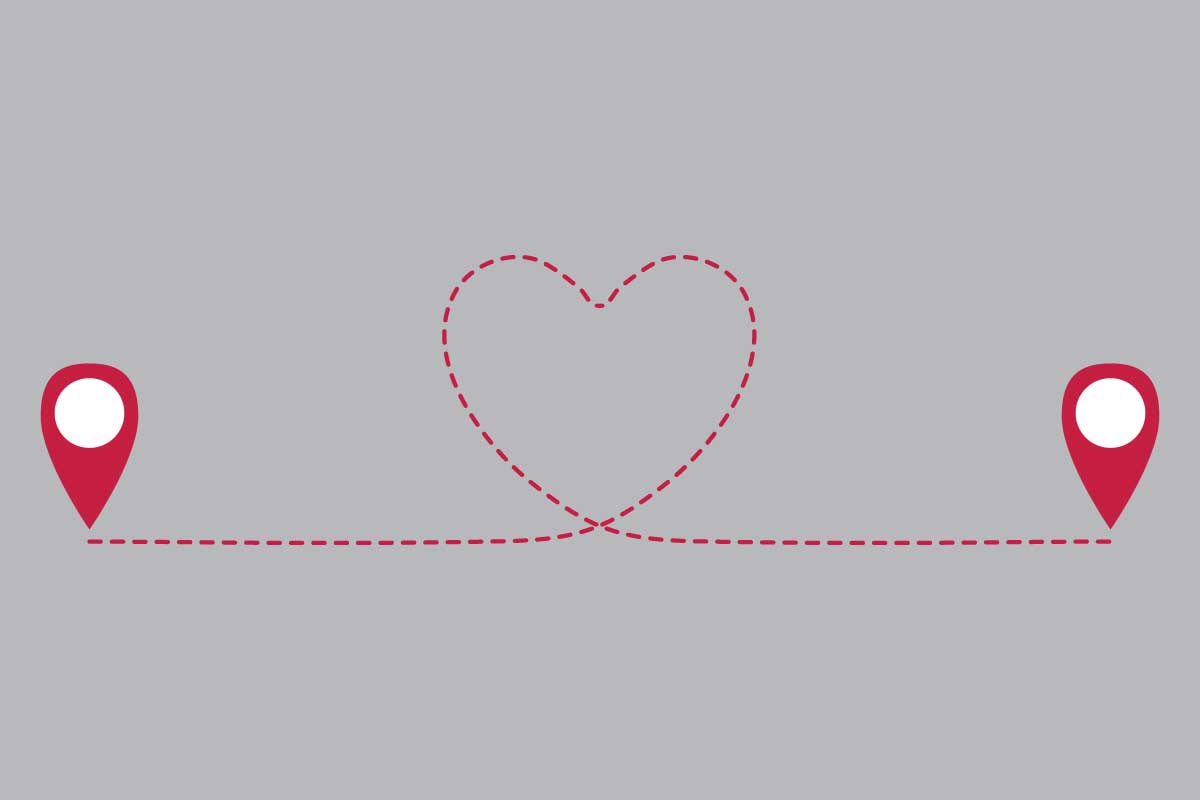 This
This  The #MeToo movement is giving a viral voice to women (and men) who have been the targets of violence and harassment. It is a social change campaign that I never thought would happen in my lifetime. Honestly, when it first started to spread on
The #MeToo movement is giving a viral voice to women (and men) who have been the targets of violence and harassment. It is a social change campaign that I never thought would happen in my lifetime. Honestly, when it first started to spread on  For those too busy to watch the five-minute video, here is a summary of the study. The researchers brought three individuals to the social science lab and told one of them that they were in charge—essentially giving that person power over the other two. While the group was busy with the assigned task of writing boring university policy, the researchers brought out a plate of four cookies. Initially, each of the three participants ate one cookie each, leaving one on the plate. Interestingly, most of the time, the person given the power eventually ate the fourth cookie. In Dr. Keltner's study taking the fourth cookie correlated with having power and also with a decrease in activity of the mirror neuron system (the circuits in your brain that produce empathy and allow appreciation of the impact of your actions on others). Further, as the researchers watched the behavior of those given power, they observed that the people in charge ate differently. They chewed with their mouths open and occasionally had little pieces of food dropping out of their mouths. Dr. Keltner describes this change in the level of interpersonal awareness as the "paradox of power"—the qualities that often bring someone to power, like empathy and the ability to listen to others, diminish once a person is in power.
For those too busy to watch the five-minute video, here is a summary of the study. The researchers brought three individuals to the social science lab and told one of them that they were in charge—essentially giving that person power over the other two. While the group was busy with the assigned task of writing boring university policy, the researchers brought out a plate of four cookies. Initially, each of the three participants ate one cookie each, leaving one on the plate. Interestingly, most of the time, the person given the power eventually ate the fourth cookie. In Dr. Keltner's study taking the fourth cookie correlated with having power and also with a decrease in activity of the mirror neuron system (the circuits in your brain that produce empathy and allow appreciation of the impact of your actions on others). Further, as the researchers watched the behavior of those given power, they observed that the people in charge ate differently. They chewed with their mouths open and occasionally had little pieces of food dropping out of their mouths. Dr. Keltner describes this change in the level of interpersonal awareness as the "paradox of power"—the qualities that often bring someone to power, like empathy and the ability to listen to others, diminish once a person is in power.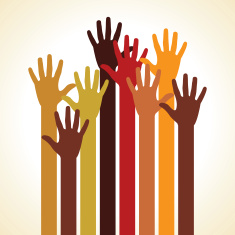 Everyone Needs to STOP the Pain!
Everyone Needs to STOP the Pain!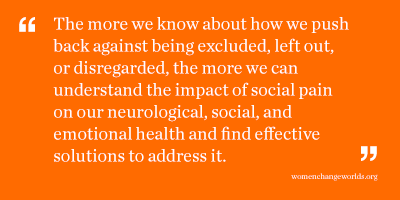 The obvious forms of social pain are glaringly obvious, often flagrant and extreme. Black men and women being stopped by police, detained or harassed, and imprisoned at sweepingly disproportionate rates compared to White people; too often resulting in violence and even murder.
The obvious forms of social pain are glaringly obvious, often flagrant and extreme. Black men and women being stopped by police, detained or harassed, and imprisoned at sweepingly disproportionate rates compared to White people; too often resulting in violence and even murder.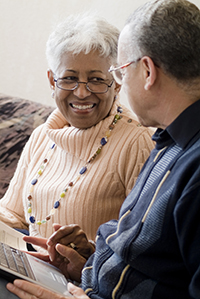
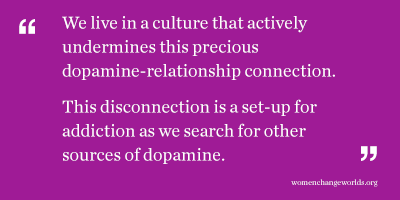 So dopamine itself is not the problem, nor is the dopamine reward system. Dopamine is simply the carrot on a stick designed to give a reward to life-sustaining activities like eating healthy food, having sex, drinking water, and being held in nurturing relationships so that you would keep doing these healthy things over and over again. The problem is how we stimulate the dopamine pathway. In an ideal world—one that understands the centrality of healthy relationship to health and wellness—the dopamine reward system stays connected to human connection as the primary source of stimulation. Unfortunately, we do not live in this ideal world. We live in a culture that actively undermines this precious dopamine-relationship connection. We raise children to stand on their own two feet while the separate self is an American icon of maturity. It is making us sick.
So dopamine itself is not the problem, nor is the dopamine reward system. Dopamine is simply the carrot on a stick designed to give a reward to life-sustaining activities like eating healthy food, having sex, drinking water, and being held in nurturing relationships so that you would keep doing these healthy things over and over again. The problem is how we stimulate the dopamine pathway. In an ideal world—one that understands the centrality of healthy relationship to health and wellness—the dopamine reward system stays connected to human connection as the primary source of stimulation. Unfortunately, we do not live in this ideal world. We live in a culture that actively undermines this precious dopamine-relationship connection. We raise children to stand on their own two feet while the separate self is an American icon of maturity. It is making us sick.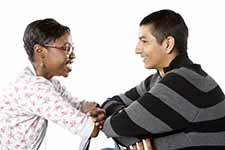
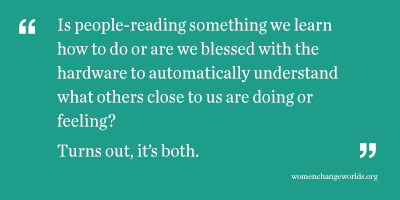 Deep in my brain, the area in the prefrontal cortex that plans and executes the physical movement of walking out the door is being stimulated. Though I am not moving, the same nerve cells are firing. When you touch the door and pull your hand away quickly and shake it a little I “know” that the door was quite hot from the pounding sunshine on the glass. My somatosensory cortex that creates sensations fires and my hand feels a low-grade sense of heat and smoothness from the window window. That is added to the immediate mix of how I am reading your experience. And finally, you walk through the door and a large smile crosses your face as you fall into the arms of a loved one. In my brain and body the nerve signal has now traveled through the insula into my “feeling centers” in my body and I feel a similar joy and lightness. I “know” you are with someone you love. All of this has happened in the blink of an eye and without you sharing any of your experience with me. My brain and body uses itself as a template to have a shared experience with you and the closer our life experiences internally have been, the more resonant we feel.
Deep in my brain, the area in the prefrontal cortex that plans and executes the physical movement of walking out the door is being stimulated. Though I am not moving, the same nerve cells are firing. When you touch the door and pull your hand away quickly and shake it a little I “know” that the door was quite hot from the pounding sunshine on the glass. My somatosensory cortex that creates sensations fires and my hand feels a low-grade sense of heat and smoothness from the window window. That is added to the immediate mix of how I am reading your experience. And finally, you walk through the door and a large smile crosses your face as you fall into the arms of a loved one. In my brain and body the nerve signal has now traveled through the insula into my “feeling centers” in my body and I feel a similar joy and lightness. I “know” you are with someone you love. All of this has happened in the blink of an eye and without you sharing any of your experience with me. My brain and body uses itself as a template to have a shared experience with you and the closer our life experiences internally have been, the more resonant we feel.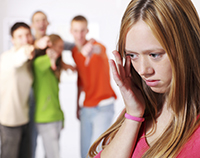 I was many things at ten years old, but one thing I wasn't was accepted. My family moved to a new town that summer—it was 1972—and on the first day of school when the school bell rang I stood in the middle of the girls’ line anxiously waiting to meet my new classmates. As I was studying my shoes I heard the laughter and the whispering, “What is that new boy doing in the girls line!” They were talking about me, well-dressed in boys clothing. I was humiliated, filled with shame, desperate to go back to my old school where people knew and accepted me. It was a long year of pain, accentuated by my teacher who routinely tried to force me to join the Girl Scouts.
I was many things at ten years old, but one thing I wasn't was accepted. My family moved to a new town that summer—it was 1972—and on the first day of school when the school bell rang I stood in the middle of the girls’ line anxiously waiting to meet my new classmates. As I was studying my shoes I heard the laughter and the whispering, “What is that new boy doing in the girls line!” They were talking about me, well-dressed in boys clothing. I was humiliated, filled with shame, desperate to go back to my old school where people knew and accepted me. It was a long year of pain, accentuated by my teacher who routinely tried to force me to join the Girl Scouts. This is where the story gets really interesting. The area that lit up when a subject was excluded is a strip of brain called the
This is where the story gets really interesting. The area that lit up when a subject was excluded is a strip of brain called the 
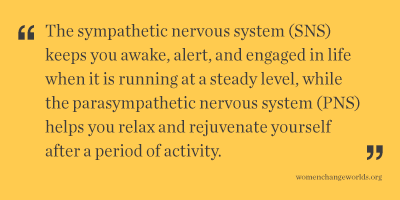 killers flood your system buffering the pain. Neither of these reactions are under your conscious control. You are automatically protected.
killers flood your system buffering the pain. Neither of these reactions are under your conscious control. You are automatically protected.
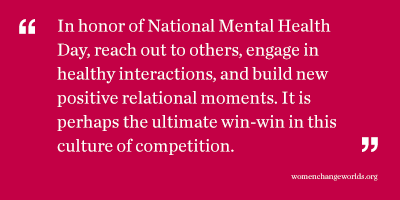 human nervous system is literally wired to function best when in
human nervous system is literally wired to function best when in 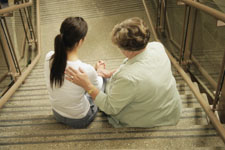
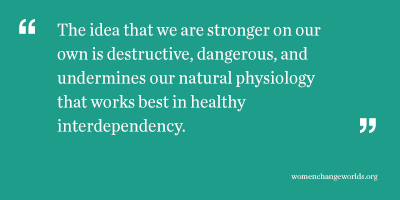 So, where are all the people with mental illness? From what I hear in my office, many are hiding and suffering in silence for fear of being stigmatized, pitied, or seen as weak. American, Westernized culture plays a large role in this fear. The pervasive image of an American is a person who is strong, independent, and can
So, where are all the people with mental illness? From what I hear in my office, many are hiding and suffering in silence for fear of being stigmatized, pitied, or seen as weak. American, Westernized culture plays a large role in this fear. The pervasive image of an American is a person who is strong, independent, and can 